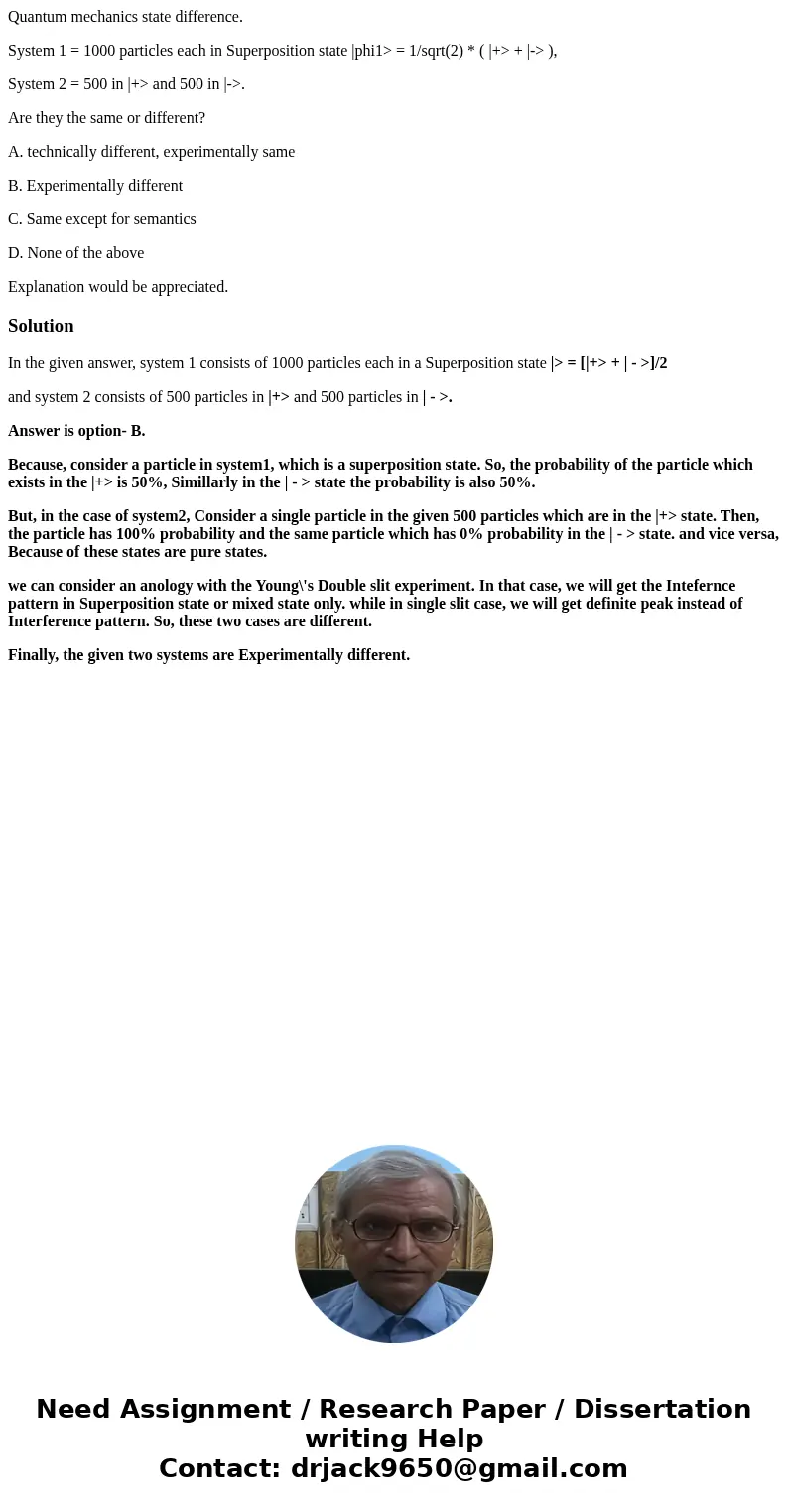Quantum mechanics state difference System 1 1000 particles
Quantum mechanics state difference.
System 1 = 1000 particles each in Superposition state |phi1> = 1/sqrt(2) * ( |+> + |-> ),
System 2 = 500 in |+> and 500 in |->.
Are they the same or different?
A. technically different, experimentally same
B. Experimentally different
C. Same except for semantics
D. None of the above
Explanation would be appreciated.
Solution
In the given answer, system 1 consists of 1000 particles each in a Superposition state |> = [|+> + | - >]/2
and system 2 consists of 500 particles in |+> and 500 particles in | - >.
Answer is option- B.
Because, consider a particle in system1, which is a superposition state. So, the probability of the particle which exists in the |+> is 50%, Simillarly in the | - > state the probability is also 50%.
But, in the case of system2, Consider a single particle in the given 500 particles which are in the |+> state. Then, the particle has 100% probability and the same particle which has 0% probability in the | - > state. and vice versa, Because of these states are pure states.
we can consider an anology with the Young\'s Double slit experiment. In that case, we will get the Intefernce pattern in Superposition state or mixed state only. while in single slit case, we will get definite peak instead of Interference pattern. So, these two cases are different.
Finally, the given two systems are Experimentally different.

 Homework Sourse
Homework Sourse